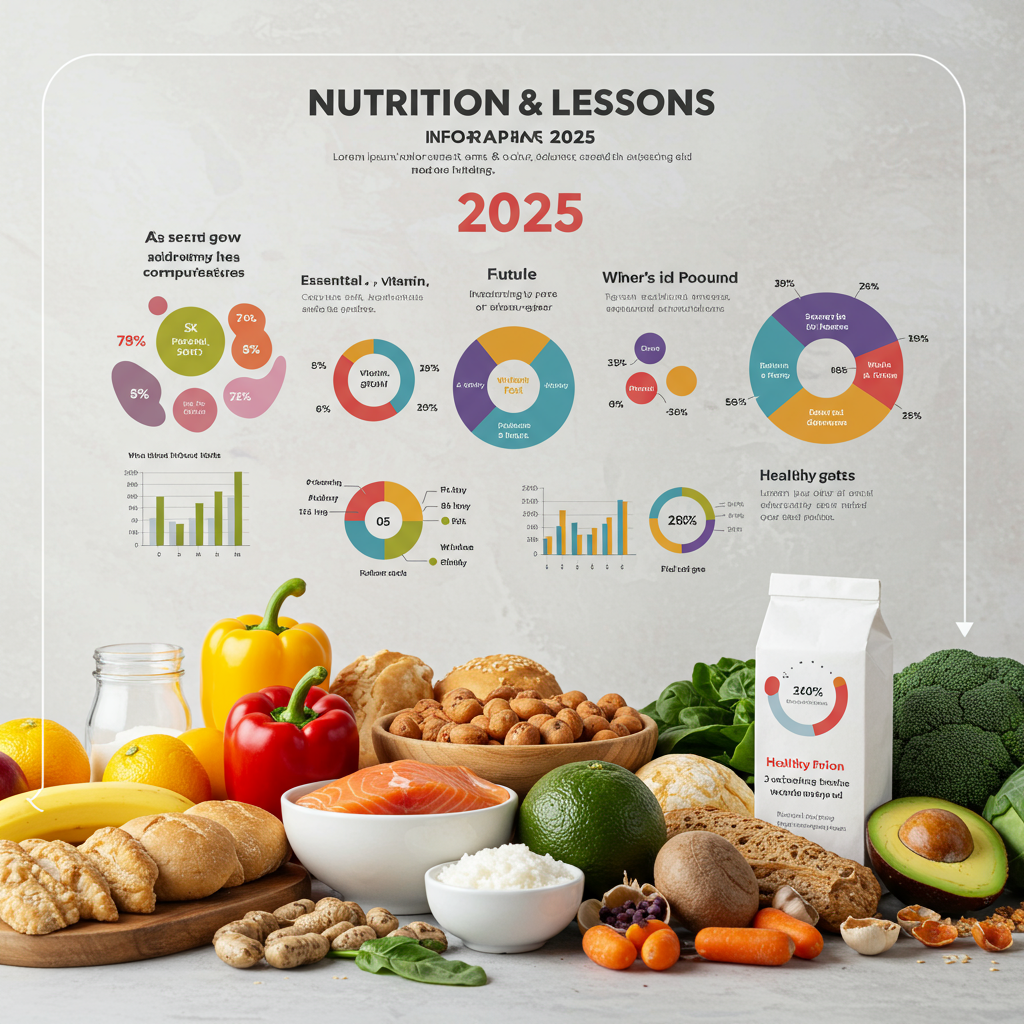Navigating the world of healthy eating can feel overwhelming, with new research and conflicting advice constantly emerging. But midway through 2025, several key nutrition themes stand out, offering valuable insights into how our diets impact our health and well-being. From unexpected benefits found in your morning routine to a stark look at common food myths and systemic challenges, understanding these lessons is crucial for making informed choices.
This year has brought important clarity to topics dominating public discussion, including the true health implications of processed foods, the effectiveness of different beverages, and the practical realities faced by many in accessing and preparing healthy meals. We’ve synthesized recent findings and expert perspectives to bring you the essential nutrition takeaways emerging in 2025.
Unpacking Ultra-Processed Foods: A Growing Health Concern
Mounting scientific evidence continues to underscore the significant health risks associated with high consumption of ultra-processed foods (UPFs). These are often characterized by long ingredient lists containing additives, flavorings, and substances not typically used in home cooking. Think packaged snacks, sugary cereals, processed meats, and ready-to-eat meals.
A stunning review published earlier this year, synthesizing data from nearly 10 million people across 45 meta-analyses, concluded that UPFs could be detrimental to virtually every body system. This extensive analysis revealed compelling links between higher UPF intake and 32 different adverse health outcomes. These include serious conditions like heart disease, type 2 diabetes, and obesity.
Beyond physical health, the research also highlighted associations with mental health issues such as anxiety and depression. Further studies in 2025 specifically connected increased UPF consumption to a higher risk of stroke and cognitive impairment. A notable study from Harvard reinforced these findings, specifically linking high intake of certain UPFs – particularly processed meats, sugary breakfast items, and sugar-sweetened drinks – with an increased risk of early death. While completely eliminating UPFs might be challenging, the collective evidence from 2025 makes a strong case for significantly limiting them. Checking ingredient lists and aiming for whole, unprocessed foods whenever possible are key strategies.
The Constant Conversation Around Protein Needs
Social media platforms and health discussions frequently highlight protein requirements. While specific new “lessons” on protein amounts weren’t universally defined in the reviewed information for 2025 so far, the persistent conversation itself reflects a growing awareness of protein’s importance. Adequate protein is essential for muscle maintenance, satiety, and overall metabolic health. Experts generally recommend distributing protein intake throughout the day and considering individual factors like age, activity level, and health goals when determining optimal amounts. The ongoing nature of this discussion emphasizes the need for individuals to seek evidence-based guidance rather than relying solely on trending opinions.
Beverages Under the Microscope: Coffee and alcohol Insights
What we drink plays a significant role in our overall diet and health. Two common beverages, coffee and alcohol, have been topics of particular interest, yielding some noteworthy insights this year.
Coffee’s Potential Perk for Healthy Aging
Coffee has long been celebrated for its association with various health benefits, including potentially reduced risks of heart disease, type 2 diabetes, and certain cancers. Adding to this list, a study presented at a major nutrition conference in June 2025 suggested another promising perk: healthy aging, particularly when consumed in midlife.
This research focused on female nurses aged 45 to 60. It found that those with the highest caffeine consumption during these years had better odds of achieving healthy aging outcomes. These positive outcomes were defined as being free from cognitive impairment and major chronic diseases like cancer, heart disease, and multiple sclerosis. While this specific study focused on a particular demographic, it contributes to the growing body of evidence suggesting coffee can be part of a health-promoting lifestyle.
The Hard Truth About Alcohol: There’s No “Healthy” Choice
A persistent myth suggests that certain types of alcohol – like red wine or clear spirits – are inherently “healthier” or “less bad” than others like beer or darker liquors. However, experts continue to push back strongly against this perception. As one senior scientist noted, “alcohol is alcohol.”
The critical takeaway reinforced this year is that any type of alcohol, consumed in any amount, can elevate your risk for numerous health problems. These include various cancers and cardiovascular conditions. The focus should shift away from trying to find the “least bad” option and towards understanding that minimizing or eliminating alcohol consumption is the most health-conscious choice.
Beyond the Plate: Practicalities and Real-World Challenges
Understanding nutrition science is one thing, but applying it in daily life presents its own set of challenges. Recent data highlights important aspects of how Americans approach food choices and the significant barriers many face.
The Power of Home Cooking
Where and how we prepare our food profoundly impacts diet quality. Data from a large U.S. survey conducted in early 2025 shows that eating home-cooked meals is far more common than dining out or ordering in. Crucially, this survey found a strong correlation between home cooking frequency and self-rated diet health. Adults who reported cooking at home daily were significantly more likely to describe their diets as extremely or very healthy compared to those who cooked less often. This underscores the value of gaining confidence and skills in the kitchen.
Programs like the Healthy Teaching Kitchen initiative, for instance, offer practical, hands-on nutrition education and cooking demonstrations. These classes teach essential skills like meal planning, smart grocery shopping, and preparing simple, healthy recipes. Such initiatives demonstrate how building practical knowledge can empower individuals to improve their diets and overall health, supporting the positive correlation seen in the survey data.
The Persistent Challenge of Cost and Access
While many Americans aspire to eat healthily, economic realities create significant obstacles. An overwhelming majority of people surveyed reported that the price of healthy food has increased recently. A large portion stated that this rising cost makes healthy eating more difficult for them. This challenge disproportionately affects lower-income adults, many of whom reported that increased costs make healthy eating a lot harder.
Access to healthy food is another major disparity. While most Americans find healthy options relatively close to home, access is reported as significantly less easy for lower-income adults, as well as for Black, Hispanic, and rural residents compared to other demographic groups. These findings highlight the systemic issues that impact dietary quality beyond individual knowledge or motivation, pointing to the need for broader solutions to ensure equitable access to nutritious food.
Staying Vigilant About Food Safety
Food safety remains a critical, albeit sometimes alarming, aspect of our food system. 2024 saw recurring issues with Listeria monocytogenes contamination in seemingly innocuous products like plant-based beverages, waffles, and mushrooms, leading to recalls, hospitalizations, and even deaths. Regulatory responses are being implemented, including stricter testing and updated inspection protocols. However, the incidents serve as a stark reminder for consumers to practice safe food handling and cooking methods at home and to pay attention to government food recall notifications. Awareness and vigilance are crucial for preventing foodborne illnesses.
The Broader Context: Food Systems and Planetary Health
Looking beyond individual plates, 2025 highlights the interconnectedness of our food choices and the health of the planet. This year’s focus for events like the International Day of Forests, themed “Forests and Food,” draws attention to how vital healthy ecosystems are for food security and nutrition globally.
Forests provide direct food sources like fruits, nuts, and wild game. They also play a critical role in supporting agriculture by hosting pollinators and enriching soil. For millions worldwide, especially in rural and Indigenous communities, forests are essential for livelihoods and food diversity. The stark reality of ongoing deforestation and fires poses a direct threat to these food systems. Recognizing this connection reinforces that sustainable food choices can benefit not only our personal health but also the health of the environment that sustains us all.
Frequently Asked Questions
What are the latest findings on ultra-processed foods?
Recent comprehensive research in 2025, including a large review of meta-analyses, confirms strong links between high consumption of ultra-processed foods (UPFs) and numerous serious health problems. These include increased risks of heart disease, type 2 diabetes, obesity, stroke, cognitive impairment, anxiety, depression, and even premature death. Experts recommend limiting UPFs by checking ingredient lists for additives and choosing whole, unprocessed foods whenever possible.
How can I improve my cooking skills for healthier eating?
Improving cooking skills and preparing meals at home is strongly correlated with eating a healthier diet, according to recent surveys. Programs like the Healthy Teaching Kitchen demonstrate practical ways to gain these skills through hands-on lessons, covering topics like meal planning, smart grocery shopping, understanding nutrition labels, and learning quick, healthy recipes. Seeking out classes or resources focused on practical kitchen techniques can empower you to make nutritious choices a regular part of your routine.
Is there a “healthier” type of alcohol to drink?
No, experts emphasize that there is no “healthier” form of alcohol. The notion that certain types, like red wine or clear liquors, are “less bad” than others is a myth. Research indicates that alcohol is alcohol, and consumption in any form or amount can increase your risk for various health conditions, including cancer and heart disease. The most health-conscious approach is to minimize or avoid alcohol altogether.
Conclusion: Applying 2025’s Nutrition Wisdom
Mid-2025 nutrition insights reinforce the enduring importance of a diet centered on whole, unprocessed foods. The growing body of evidence on the dangers of ultra-processed foods serves as a clear call to action. Meanwhile, acknowledging surprising benefits from beverages like coffee and understanding the stark realities of alcohol’s health risks provide further guidance. The data also highlights that achieving optimal nutrition isn’t just about knowing what to eat; it’s also about developing practical skills like home cooking and addressing systemic issues like cost and access to healthy food. By integrating these lessons – focusing on whole foods, making informed beverage choices, building kitchen confidence, and advocating for equitable food systems – we can navigate the path toward better health this year and beyond.




